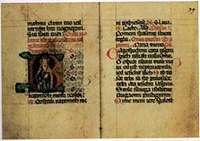
Back Ахорват бызшәа Abkhazian Kroaties Afrikaans Kroatische Sprache ALS ክሮኤሽኛ Amharic Idioma croata AN Croatisc sprǣc ANG اللغة الكرواتية Arabic لغه كرواتى ARZ Idioma croata AST Хорват мацІ AV
| Croatian | |
|---|---|
| hrvatski | |
| Pronunciation | [xř̩ʋaːtskiː] |
| Native to | Croatia, Bosnia and Herzegovina, Serbia (Vojvodina), Montenegro, Romania (Caraș-Severin County), Slovenia, and diaspora |
| Region | Balkans |
| Ethnicity | Croats |
Native speakers | 5.6 million (2006) |
Indo-European
| |
| Latin (Gaj's alphabet) Cyrillic Croatian Braille | |
| Official status | |
Official language in | |
Recognised minority language in | |
| Regulated by | Institute of Croatian Language and Linguistics |
| Language codes | |
| ISO 639-1 | hr |
| ISO 639-2 | hrv |
| ISO 639-3 | hrv |
| Linguasphere | part of 53-AAA-g |
 Traditional extent of Serbo-Croatian dialects in Croatia and in Bosnia and Herzegovina | |
The Croatian language is spoken mainly throughout the countries of Croatia and Bosnia and Herzegovina and in the surrounding countries of Europe. Croatian grammar is the grammar of the Croatian language. The Croatian language consists of three vernaculars (Kaikavian, Chakavian and Shtokavian).[2]


Croatian grammar books show that the codification of the language started at the beginning of the 17th century (the first grammar was written by Bartol Kašić in Latin in 1604). This means that the rules for the language were written down. From 1604 to 1836 there were 17 grammars. Most of them described the Štokavian dialect, but some were about Kajkavian. In the 19th century, more grammars based on Štokavian were written. They were "Nova ricsoslovnica illiricka", written by Šime Starčević (1812), and "Grammatik der illyrischen Sprache", written by Ignjat Alojzije Brlić (1833),.[3] Even before the 19th century, the three dialects of the Croatian language were almost equally used. However, the way each dialect was written down varied throughout Croatia. Near the Adriatic coast, it was more similar to Italian, and near the Hungarian border, it was more similar to Hungarian.[3][4] All grammars of the above period (1604-1836) used three accents: acute, grave and circumflex, Starčević's grammar is an exception as it uses a system of four accents.[3] In 19th century, Ljudevit Gaj proposed new letters from Czech (č,ž,š,ľ,ň,ď and ǧ). The letters that were accepted were č, ž and š, and from Polish, ć. For other phonemes (sounds), the digraphs that were accepted were ie, lj, nj and dž. Later dj or gj was changed to đ (according to proposal by Đuro Daničić).[4]
- ↑ "Linguistic Lineage for Croatian". Ethnologue.com. Retrieved 2010-01-26.
- ↑ Milan Moguš, "Povijest hrvatskoga književnoga jezika", Globus, Zagreb, 1993, ISBN 953-167-014-5, p. 12
- ↑ 3.0 3.1 3.2 Sanda Ham, "Povijest hrvatskih gramatika", Globus, Zagreb, 2006, ISBN 953-167-185-0, p. 16
- ↑ 4.0 4.1 Težak-Babić, "Gramatika hrvatskoga jezika", Školska knjiga, Zagreb, 1994, ISBN 953-0-40008-X, p. 13
© MMXXIII Rich X Search. We shall prevail. All rights reserved. Rich X Search